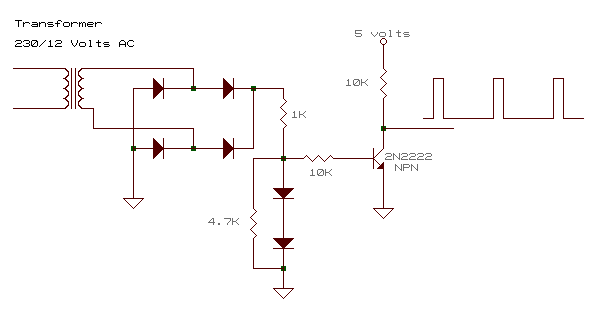 |
| zero-crossing detector | go back |
 |
| 1 |
an ideal time base would use a high-accuracy crystal to set the frequency of an oscillator. these oscillators usually operate at very high frequencies.
next prev top |
| 2 |
there are packages available that reduce such high frequencies into those which are usable for driving clocks. reducing such high frequencies with counters yield bulky and expensive time base sources.
next prev top |
| 3 |
the zero-crossing detector given here as an example takes its time base from the 60-hertz power line. the average time over a period of one day is very accurate, although they may not be as accurate when "instantaneous" time is measured.
next prev top |
| 4 |
the power-generating facilities monitor the time variance with respect to a "gps" standard time source, and make the corresponding corrections as may be needed.
next prev top |
| 5 |
the alternating current power source is rectified, full-wave, with the use of a bridge rectifier (without a filtering capacitor). opposite diodes starts to conduct when the terminal voltage of the secondary reaches about one volt. current is introduced into the circuit via the 1k resistor. the two diodes in series act as clamps, in order to assure that the voltage introduced into the system is kept low, while at the same time, providing base-emitter bias to the 2n2222, causing it to conduct to bring its collector to about 0.2 volt from ground.
next prev top |
| 6 |
when the terminal voltage at the secondary of the transformer approaches "zero", base-emitter bias is removed from the 2n2222 to cause it to go out of conduction, bringing its collector voltage to the level of the positive power supply.
next prev top |
| 7 |
the resulting stream of positive-going pulses, numbering 120 in one second, are conditioned by an ne555 connected in an inverting mode to provide clean negative-going pulses for the succeeding ripple counters. a "divide-by-ten" (7490) and a "divide-by-twelve" (7492) provide are used to produce pulses at one-second intervals for the digital clock counters.
next prev top |
| 8 |
888
next prev top |